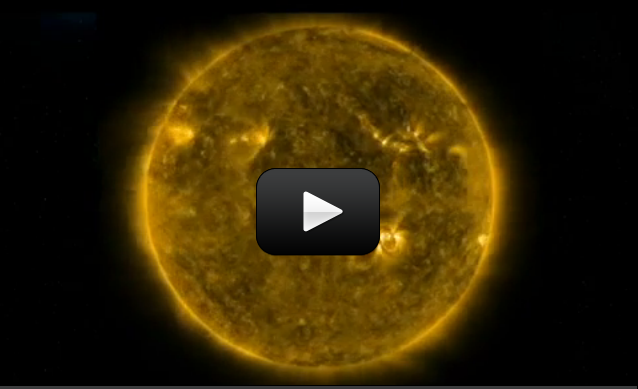Helioseismology is the study of wave oscillations in the Sun. By studying the waves, scientists can tell what’s going on inside the Sun. It’s like studying earthquakes to learn what’s going on inside the earth. The Sun is filled with sound, and studying these sound waves is currently the only way scientists can tell what’s going on inside, since the light we see from the Sun is just from the upper surface.
Molecules are vibrating back and forth at fairly high rates of speed, creating waves. Energy moves from place to place by waves. Sound energy moves by longitudinal waves (the waves that are like a slinky). The molecules vibrate back and forth, crashing into the molecules next to them, causing them to vibrate, and so on and so forth. All sounds come from vibrations.
Materials
- Musical instruments: triangles, glass bottles that can be blown across, metal forks, tuning forks, recorders, jaw harps, harmonicas, etc. Whatever you have will work fine.


Scientists used a special instrument called the Michelson Doppler Imager (MDI) to detect vibrations on the sun’s surface. These surface vibrations slightly affect the wavelength of the light (Doppler Shift) as it leaves the sun. This Doppler shift causes the light waves to slightly compress (become more blue) or slightly expand (become more red). The MDI instrument is able to detect these tiny changes, which scientists then convert into sound. The MDI is one of twelve instruments on the Solar and Heliospheric Observatory (SOHO).
Since sound cannot travel through space because there aren’t enough molecules, how was that video able to capture the sounds of the sun?